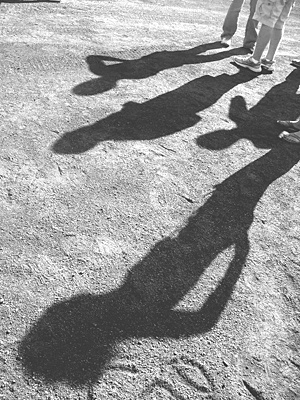All Nonfiction
- Bullying
- Books
- Academic
- Author Interviews
- Celebrity interviews
- College Articles
- College Essays
- Educator of the Year
- Heroes
- Interviews
- Memoir
- Personal Experience
- Sports
- Travel & Culture
All Opinions
- Bullying
- Current Events / Politics
- Discrimination
- Drugs / Alcohol / Smoking
- Entertainment / Celebrities
- Environment
- Love / Relationships
- Movies / Music / TV
- Pop Culture / Trends
- School / College
- Social Issues / Civics
- Spirituality / Religion
- Sports / Hobbies
All Hot Topics
- Bullying
- Community Service
- Environment
- Health
- Letters to the Editor
- Pride & Prejudice
- What Matters
- Back
Summer Guide
- Program Links
- Program Reviews
- Back
College Guide
- College Links
- College Reviews
- College Essays
- College Articles
- Back
Harmful Interferences
Imagine walking in a crowded street full of people. All sorts of people walk by, each having unique physical appearances. Suddenly, a scary looking mother started scolding her child, who cried desperately. People started looking at the mother and child as they walk by the streets. In each person’s mind, an inference about the mother and child’s characteristics starts to form. Sometimes this inference may be wrong, and sometimes it may be right. And if the inference is wrong, others can be hurt unintentionally and create misunderstandings.
The basis to a “wrong” and “right” inference is indeed, an opinion of the majority. However, this inference affects the perspective one looks at others. If a nice person is looked at in a bad way, rumors may spread, causing unnecessary troubles for the person. For example, suppose an ugly fat man who often donates money to the poor accidentally bumped into a cat who suddenly leaped towards the road. After that, a sadist, handsome teenager rolled his motorcycle over the dead cat’s body. At the time, there was no one near that saw the incident.Then, a random person walks near and saw the situation. The person would most likely think the fat man is completely guilty for bumping into the cat, and the teenager is an innocent person that just happened to past by.
At most times, wrong inferences do not cause harm to others. One may think “that man is ugly”, but not do anything to the person. However, wrong inferences about people can lead to a wrong impression of a person. A human mind can automatically connect “bad” person to “doing bad things”. Because of this, acts of bullying and discriminating happens from time to time. Sometimes people don’t even know they are unintentionally classifying people into different levels depending on looks. To prevent this, we must, at the very least, try to change our opinions into unbiased ones. Opinions like “He is ugly.” or “He looks dirty”. Whenever they appear in our mind, try to convince ourselves, using any positive characteristics from the person you can think of. “He looks like he’s skilled at sports”, or “ He may be a great contributor to donating facilities”. These ideas, on the other hand, can’t neutralize our instinctive inferences about people.
Humans may be a more civilized species compared to other organisms, but it is still a hard thing to do to fight one’s own instinct. We might not be able to change our own thoughts easily, but we can try to convince ourselves. Being an ugly, fat man doesn’t mean he is guilty for everything, while being a handsome teenager doesn’t mean he can’t do anything wrong. Remember this, so that the next time a mother scold her child down the street, we can all think positive and continue our day without too much trouble.

Similar Articles
JOIN THE DISCUSSION
This article has 0 comments.
